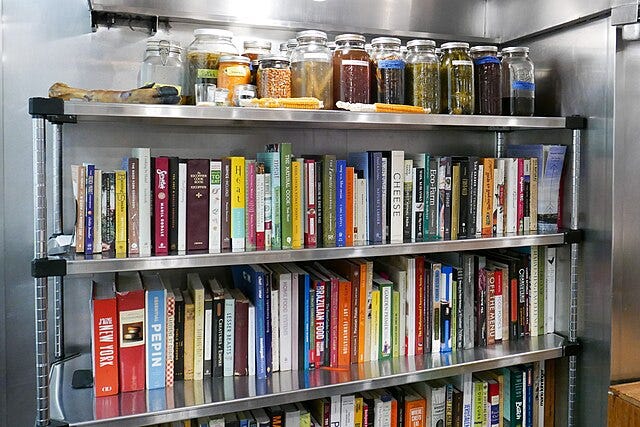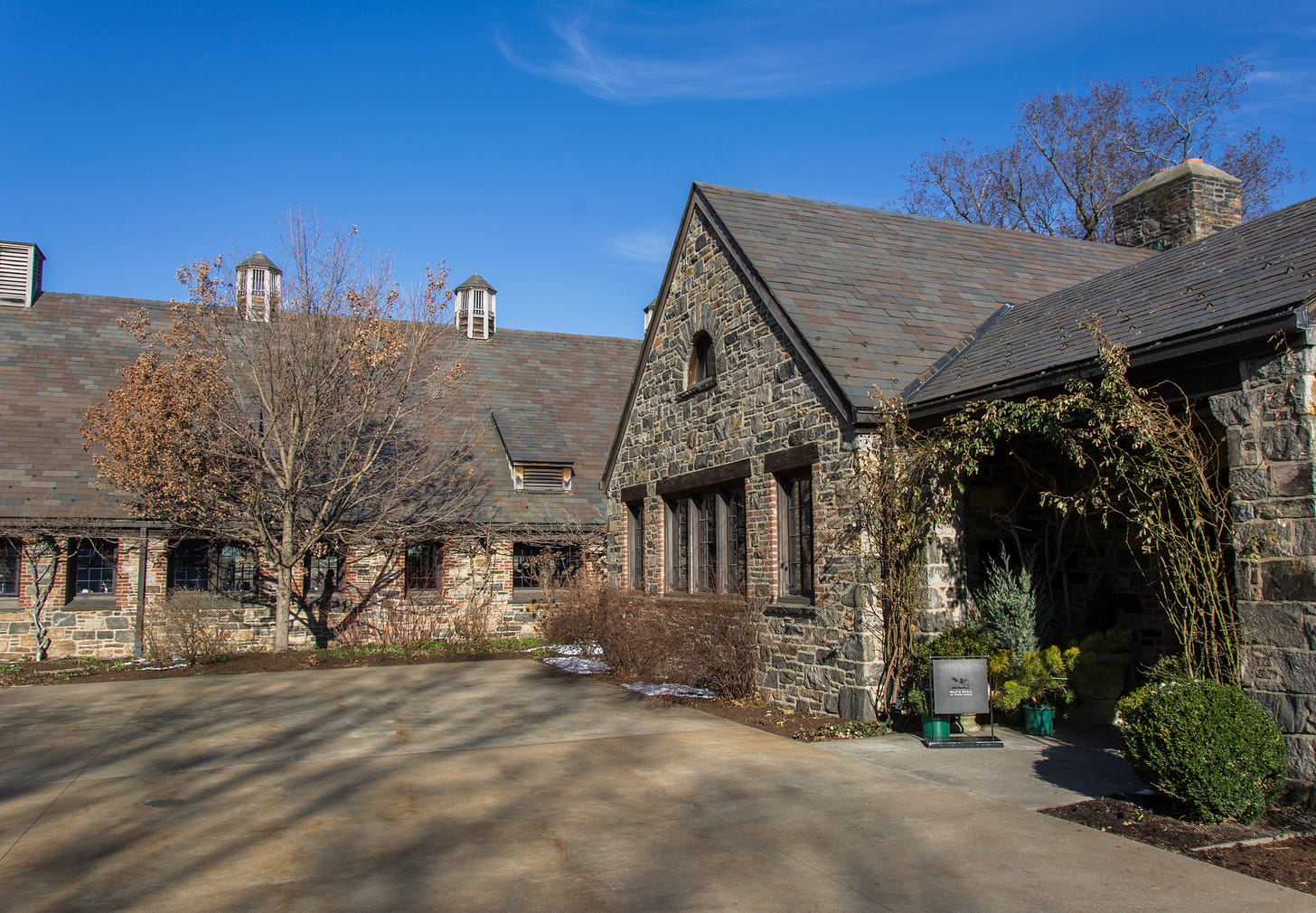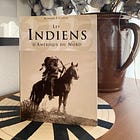Green Michelin Star
Blue Hill Farms, Heirloom Corn and Green Stars is a mix of good news
Can you consider yourself a foodie, food nerd, a bon vivant, gourmet, or a glutton if you’ve never heard of the Michelin Star? Of course, let’s not be harsh here! If not, however, it is quintessential in terms of food history and restaurant culture.
Blood, sweat, and tears have been shed over these stars, chefs and restaurants have risen to fame and have claimed bankruptcy. It also has been detrimental to mental health from the high pressure and intense demand to sustain the top-notch quality that is needed to upkeep a Michelin Star. Chefs have quit, committed suicide, and everything in between from the loss of these highly coveted stars.
For some, it is the highest accolade you can receive in hospitality. For others, it is bullshit. Depends on who you talk to, but I love asking people how they feel about the Michelin Stars. Give it a try.
The Michelin Brothers
Andre and Edouard Michelin hailed from a small town in France and founded a tire company in 1889 named Michelin. To promote their tires and help drivers guide their voyage across France they made a small red booklet which was a map with information on the location of gas stations, car mechanic listings, tire repair and replacement instructions. For twenty years this little booklet was free until Andre Michelin saw one of their booklets used to prop a workbench in a tire shop.

The Michelin brothers decided to charge for their guides which became the birth of the Michelin Guide and was launched in 1920. That same year, the guide included a list of hotels in Paris and lists of restaurants separated by categories. The restaurant section in their guide grew so much in popularity that the Michelin brothers hired inspectors to anonymously visit, dine, and review those restaurants, as is still practiced today.

In 1926 they began awarding Michelin Stars to classify fine dining establishments, in 1932 the star grading of 0 to 3 stars was introduced. Finally, in 1936 the criteria for the star rankings were published:
⭐️ Michelin star meant "A very good restaurant in its category."
⭐️⭐️ Michelin stars meant "Excellent cooking, worth a detour."
⭐️⭐️⭐️ Michelin stars signified "Exceptional cuisine, worth a special trip."
World War I & II
During World War I and II, the guide was suspended. In 1944, by the request of the Allied Forces, the last on record 1939 guide to France was specifically reprinted for military purposes since they were the most up-to-date and helped guide troops across France since the majority of signage was taken down or destroyed.
On May 16th, 1945, one week after VE Day (Victory in Europe Day) the stars reappeared to the public again, literally.
War time shortages had affected all of Europe which led Michelin to limit their ranking to a maximum of two stars. By 1950 the guide had 38 of the 2-star establishments sprinkled across France. In 1956 no stars were awarded for the first Michelin guide edition for Italy neither for the first edition in 1964 for the German guide.
Modern Michelin
In 1997, they launched the Bib Gourmand which signifies a ‘fork and spoon’ locale. A reflection of ‘something for everyone, for every occasion and in every price bracket’ which became a value-for-money award. The price limit of the restaurant is a deciding factor in granting an establishment the award of Bib Gourmand. The logo is a weird one with the Michelin man, licking his no existent lips.
The most recent award is the very new Green Star which was introduced in 2020. Since that year was a blur, and one where I was definitely not paying any attention to gastronomical awards or ceremonies this is big news to me. A Green Michelin Star signifies an award for sustainable practices and accountability for a restaurant’s ethical and environmental standards.

Blue Hill at Stone Barns and the Story of Corn
As soon as I heard about this Green Star I immediately thought of Blue Hill at Stone Barns and their chef, Dan Barber and Sean Sherman of which I wrote about both in the past here:
Dan Barber is a chef who received an epiphany from ‘heritage’ or ‘heirloom’ corn but it depends on whose heritage or heirloom. In 2005 he received a package with 2 ears of corn and a letter. The letter explained that the corn was an heirloom variety called New England Eight Row Flint. He gave the corn to his right-hand farmer Jack Algiere to grow.
They grew it using the Three Sisters method traditional to the Iroquois, planting it next to dry beans and squash. The corn would give support for the beans and the squash would inhibit weeds. After patiently awaiting its cultivation they noticed it was a corn that is low-yield which was most likely the reason for its near extinction since conventional farmers favoured quantity over quality. The corn’s high nutrient value, protein, and profound yellow-orange pigment proved promising.
Finally, when Barber made polenta with that corn, he states:
“It wasn’t just the best polenta of my life […] it was polenta I hadn’t imagined possible, so corny […] the taste didn’t so much disappear as slowly, begrudgingly fade. It was an awakening.”
That taste is coming straight from the corn. Dan Barber hopes this isn’t just a foodie fascination because he believes there is more at stake about the way food is being grown.
"What I've come to learn from this experience is that if you are pursuing great flavour," he says, "you are pursuing great nutrition. It's one and the same."

He is unifying farmers and plant breeders to work together to combine their knowledge, skills, and efforts to mix the old with the new breeding techniques to ameliorate the nutritional value food used to have.
With his famous persona and restaurant, he took a valuable American Indian ingredient and transformed it to his benefit. Is this a form of culinary ignorance? Taking and colonizing an ingredient just as was done 400 years ago. Nonetheless, he received fame and recognition for his ‘epiphany’ along with a Michelin star and a Green Michelin star.
Again, this reminds me of The Sioux Chef, Sean Sherman, and his culinary purpose in educating and providing righteous avenues of growing and learning the roots of American Indian agriculture and ingredients all across the United States, yet he doesn't receive the same high-class awards from Michelin. Quite fucked up actually.
Besides that, Dan Barber stepped down from the kitchen in August 2020 and Blue Hill transformed into a diversity-focused chef-in-residence concept. Which was a healthy response to the Black Lives Matter protests which brought attention to the structural inequalities in the restaurant industry.
Barber was appointed by the President of the United States, Barack Obama to serve on the President's Council on Fitness, Sports and Nutrition and is also a member of the advisory board to the Harvard Medical School Center for Health and the Global Environment. In 2009 Time magazine named him one of the world’s 100 most influential thinkers.
A Green Future
When I saw the Michelin Green Star next to the 2 Michelin Stars that this restaurant has under its belt; Blue Hill does claim a few tremendous things about its ethos:
They work with 64 local farms and have 6 ‘special agent’ farmers who can get them anything they want, whenever. They buy local first, and organic second. 30% of their winter menu is bought in October and November to store, preserve, or ferment. 80% of their seafood comes from local day boat fishermen who make weekly deliveries to the restaurant. They give an advance, with no interest to half a dozen local farmers during January so these farmers can pay bills until spring and keep supplying Stone Barns!

They work with vegetable and grain breeders to create varieties that give better yields and are blight-resistant, which lowers the input and requires less energy to produce which means less fertilizer and pesticides. These are just a few of their initiatives that shake the foundation of what restaurants can become, which obviously takes a tremendous amount of work.
When it comes to waste at Blue Hill they have an organised system to recycle and reinvent the normal routine of restaurants. The cooks dispose of rests into separate bins, one for the pigs, one for compost, and one for fermenting food scraps for laying hens. They only serve grass-fed beef and grass-fed milk, they will not serve milk or beef that is fed on grains. The pigs served in the restaurant are fed on kitchen waste and used grains from local breweries. Their corn cobs are ground up to become a breeding ground to grow oyster mushrooms.
They also carbonise leftover bones from making sauces or stocks to create bone charcoal and they give more leftover bones to their local artist Gregg Moore to create bone china to make plates and glassware. Finally, the clay from the farm Stone Barns is used to make ceramics.
If this is not the closest thing to a full circle I don’t know what is.
This effort, these initiatives, this form of thinking and using is a culinary and natural dance with the elements. This doesn’t sound like a restaurant, but an evolving and growing community of passionate artisans who help each other achieve higher heights.
They are champions battling the status quo and becoming one with their environment because they have the monetary means and backup. They are not forcing things with ‘Big Food’ techniques that leave a literal scorched earth in the name of quantity. They are quality — every step of the way, yet there are so many others who deserve such an award.
Still, I applaud them and the work they do. Evidently, so does the award of a Green Star.
A very honorable mention is of the countless chefs in the world doing very similar actions like Dan Barber or Blue Hill. As in my previous newsletter of The Sioux Chef, Sean Sherman fighting the same fight, in his own way through his culture and community. An inspiring purpose with food.
Polenta-ly yours,
The Greasy Pen.





